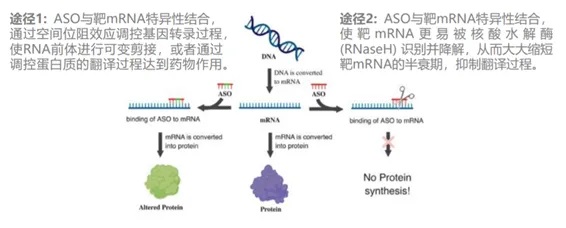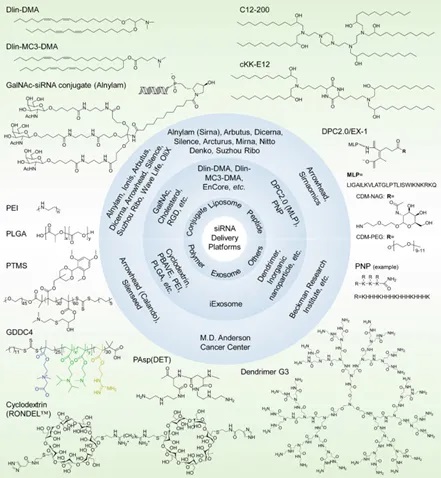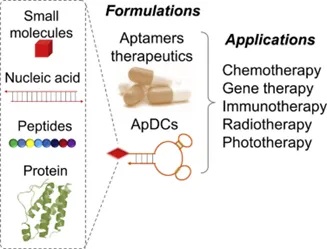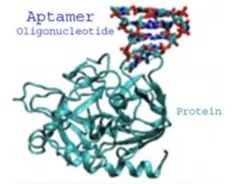In recent years, the research and clinical treatments of small nucleic acid drugs have achieved several breakthrough results. They have become a new hot spot for global investment and a battleground for biopharmaceutical giants. Nucleic acid therapy has entered the fast lane.
Small nucleic acid drugs primarily target intracellular mRNA through the principle of base complementary pairing. By regulating protein expression, they achieve the goal of treating diseases. Traditional small molecule drugs and antibody drugs mainly act on proteins, thus their drug targets are limited. The mechanism of small nucleic acid drugs targeting mRNA provides a large number of candidate drug targets for new drug development.
Small nucleic acid drugs have the advantages of a short development cycle, lasting effects, higher development success rate, less likelihood of resistance, and a wide range of therapeutic fields. It is expected that in the future, the technical path for new drug development may see a tripartite division, with small molecules, antibodies, and small nucleic acid drugs each accounting for one-third. Small nucleic acid drugs will trigger the third wave.

Based on the different structures, drug mechanisms, and action targets of small nucleic acids, various types have been developed, including antisense ASO, siRNA, aptamer RNA, miRNA, saRNA, CpG oligonucleotides, ribozymes, tRNA, and Antibody Nucleic Acid Drug Conjugate (ARC), among others. Among them, ASO, siRNA, and Aptamer are the most researched small nucleic acid drugs.
ASO acts on the translation process from mRNA to protein and occupies a dominant position among researched and applied small nucleic acid drugs. ASO is a synthetic short single-strand oligonucleotide that enters cells and regulates protein generation through two pathways.
Currently, there are 9 ASO drugs globally approved for the market, and over 50 ASO drugs are in clinical research stages, covering areas like the central nervous system, cardiovascular, anti-infection, and tumours. The leading company Ionis developed Nusinersen, the best-selling ASO drug, with sales of $1.9 billion in 2021.
More and more ASO-based therapies are being tested in clinical trials. Improvements in ASO drug delivery may soon change the treatment landscape for many diseases.

Caption: ASO Mechanism of Action
RNAi is an ancient biological mechanism for defending against external invasions. Theoretically, it can silence any disease-related gene in a sequence-specific manner, making siRNA a promising therapy. Without protective delivery vectors, siRNA must undergo chemical modifications to ensure stability in systemic circulation after extravascular administration. siRNA is a synthetic double-stranded short RNA molecule that combines with AGO proteins to form the RISC. One strand is degraded, and the other strand binds to and degrades target gene mRNA through base complementarity, blocking the expression of the target protein and thereby achieving therapeutic effects. siRNA is highly specific.
Leading the siRNA drug development, Alnylam's Patisiran, approved in 2018, was the world's first siRNA drug, pioneering the siRNA drug market. GalNAc conjugation is an effective method to increase siRNA accumulation in target organs and promote cellular uptake. Optimized siRNA design and advantageous delivery routes are critical for clinical translation of GalNAc-siRNA.
Additionally, backbone chemical advances initially designed for ASO therapies have also been applied to siRNA therapies. The administration routes impact the clinical translation of GalNAc-siRNA conjugates and patient compliance. After twenty years of research and development, there are now five siRNA drugs on the market. siRNA therapy has established a remarkable milestone as it continues to change human disease treatment and management, with long-lasting therapeutic effects achievable with quarterly or even biannual dosing.

Caption: siRNA delivery platforms under preclinical and clinical evaluation
Aptamer is a short single-stranded oligonucleotide with a special three-dimensional structure obtained through in vitro selection. It can specifically bind to a wide range of targets, including proteins, small molecules, metal ions, viruses, bacteria, and whole cells. Its high specificity and binding affinity can reach the levels of antibodies.
Compared with antibody drugs, nucleic acid aptamers have advantages such as small size, lower immunogenicity, non-cellular chemical synthesis, strong tissue penetration, ease of modification, and low cost, presenting extensive applications in disease diagnosis, treatment, and prevention. However, its three-dimensional structure is greatly affected by pH, and its affinity is highly dependent on the properties of the solution.
The first Aptamer drug, Pegaptanib, was approved by the FDA in 2004. It is a 29-nucleotide RNA aptamer whose 5' end polyethene glycol part can extend its retention time in the human body. Pegaptanib achieves its therapeutic effect by inhibiting angiogenesis through its spatial structure binding with vascular endothelial growth factor (VEGF), thus being developed to treat wet age-related macular degeneration.

Caption: Mechanism of aptamer application

Caption: Three-dimensional schematic of specific aptamer binding to target protein

Delivery methods and efficiency are key to whether small nucleic acid drugs can enter cells and exert their effects. Small nucleic acid drugs face two major challenges when entering cells: RNA is easily degraded by RNases in plasma and tissues when exposed to blood, and negatively charged RNA has difficulty crossing cell membranes.
Although different RNA therapies may have different mechanisms of action, they must all avoid clearance by non-target organs, enter the correct tissues, and not trigger harmful immune responses. Delivery technology can be classified into naked RNA modification delivery technology, liposome nano-delivery technology, conjugated linkage delivery systems (small molecule ligands, antibodies, and other molecules), and other various new delivery systems (such as polymeric nanoparticle delivery systems, extracellular vesicle delivery systems). Among these, LNP and GaINac technologies are relatively mature.
The GaINac technology mainly targets the liver, and future breakthroughs in targeting other organs are anticipated, such as delivery systems for the central nervous system, eyes, renal cancer cells, and pulmonary epithelial cells that Alnylam and Arrowhead are developing.
